|
A Blog about Sensory Processing Sensitivity from the Worldview of a High-Sensing Male
Total words 856, Time to read: 3 minutes 36 seconds NOTE: David Mech introduced the concept of alphas with his study of wolves in the 1970s. He rejected the entire concept in 1999 and has been trying to correct the perception since. The translation from wolfpack to human packs occurred over the years and has held a stronghold in male (and female) imaginations. This article aims to have some fun with a pseudo-scientific concept of Sigma male and to compare it to the general traits of HSP males. It sounds to me that Sigmas are dispositionally similar to INFJs in the Myer's Briggs world. Both are rare traits, and both are passionately independent and seemingly loners. The truth, well, it's out there somewhere. I suspect a subset of the HSP male population might identify with the Sigma labeling. https://www.thesensitiveman.com/blog/the-sensitive-man-where-do-nice-guys-really-finish There is a growing recognition of the diversity and complexity that defies traditional categorizations in the realm of male personalities. Two terms that have gained popularity in recent years are "Highly Sensitive Men" (HSPs) and "Sigma Males." While one (HSPs) is a scientifically validated trait, the other (Sigma Male) does not have the concrete scientific backing. Nevertheless, in this blog, we'll explore the similarities and differences between Highly Sensitive Men and Sigma Males, highlighting the unique qualities that make each group stand out. We'll also discuss whether Sigma Males might share traits with the INFJ personality type. Highly Sensitive Men: The Empaths and Deep Thinkers Highly Sensitive Men, often referred to as HSPs, exhibit four major traits that set them apart: 1. Depth of Processing: HSPs process information deeply, reflecting on their experiences and the world around them. They often ponder the whys and hows of life. 2. Propensity for Overstimulation and the Need for Downtime: HSPs are more easily overwhelmed by sensory stimuli and require regular downtime to recharge. They might seek solitude or quiet to recover from excessive stimulation. 3. Emotional Depth and Reactivity, Plus High Degree of Empathy: HSPs have heightened emotional sensitivity and empathy. They can deeply connect with others' emotions and are often compassionate listeners. 4. The Ability to Sense the Subtle in the Environment: HSPs possess an uncanny ability to notice the subtle details that others may overlook. They can sense changes in mood, atmosphere, or even slight environmental shifts. Sigma Males: The Independent Mavericks Sigma Males, on the other hand, exhibit their own unique set of characteristics: 1. Independence: Sigma Males prioritize their independence and self-reliance. They don't conform to societal norms or seek validation from others. 2. Elusive: Sigma Males are often hard to pin down. They don't follow traditional social patterns and may come and go as they please, preferring to maintain a level of mystery. 3. Deep Thinkers: Like HSPs, Sigma Males are deep thinkers. They contemplate complex ideas and often have a profound understanding of the world. 4. Detest Shallowness: Sigma Males have a strong distaste for shallow interactions and superficiality. They seek meaningful connections and experiences. 5. Charismatic: Despite their elusive nature, Sigma Males can be charismatic when they choose to engage with others. They have a magnetic quality that draws people in. 6. Brooding: Sigma Males are known for their introspection and tendency to be somewhat brooding or introspective. 7. Critical Thinking Skills: They possess sharp critical thinking skills, which allow them to see through deceptions and question the status quo. 8. Embrace Ambiguity: Sigma Males are comfortable with ambiguity and uncertainty. They don't feel the need for clear-cut answers or a rigid structure in life. 9. Don't Easily Fit In: They don't conform to social norms and often find themselves on the fringes of social groups. 10. Highly Adaptable: Sigma Males are adaptable and can thrive in various environments due to their independence and resourcefulness. 11. Dislikes Conformity: They reject conformity and prefer to follow their path. The Numbers Game: Comparing Populations Regarding the prevalence of these personality types, the statistics vary significantly. Highly Sensitive People, both men and women, are estimated to comprise 20-30 percent of the population. This indicates a relatively common trait. In contrast, Sigma Males are believed to be much rarer, accounting for only around 0.02 percent of the male population. This extreme rarity suggests that Sigma Males are indeed a distinct and unique group. Sigma Males and the INFJ Personality Type Sigma Males share some traits with the INFJ personality type, such as deep thinking, independence, and aversion to shallowness. However, it's important to note that personality types, like INFJ, are based on broader behavioral patterns. In contrast, Sigma Males are a specific subset of individuals prioritizing their independence and self-sufficiency. Conclusion In the world of male personalities, Highly Sensitive Men and Sigma Males represent two distinct groups with their own unique qualities. While some traits like deep thinking and independence may overlap, they are not one and the same. Highly Sensitive Men are characterized by their emotional depth and sensitivity, while Sigma Males are known for their independence and non-conformity. It's essential to recognize and appreciate the diversity of personalities among men and move beyond simplistic categorizations of alpha, beta, omega or any other label. Instead, let's celebrate the richness of human nature and the many ways individuals can thrive and contribute to society.
0 Comments
The Sensitive Man - Embracing Masculine Diversity: Breaking Free from Unrealistic Stereotypes6/26/2023
A Blog about Sensory Processing Sensitivity from the Worldview of a High-Sensing Male Total words 496, Time to read: 2 minutes 5 seconds Introduction: Society's perception of masculinity has long been confined to narrow stereotypes that limit the true essence and diversity of being a man. The notion that masculinity is defined solely by specific actions or interests disregards the multifaceted nature of men. In this article, we will explore the concept of masculinity beyond traditional roles and challenge the preconceived notions that have restrained men for far too long. The Fallacy of Stereotypes: Outdated notions of masculinity have dominated societal expectations of men, emphasizing physical strength, stoicism, and dominance. These stereotypes ignore the unique qualities and characteristics that make each man an individual. Breaking free from these societal pressures is crucial, as men should be encouraged to embrace their authentic selves rather than conforming to an unrealistic mold. Real strength lies in being true to oneself, regardless of societal expectations. Redefining Masculinity: To truly embrace masculine diversity, we must shift the focus from actions to character. A man's values and integrity should define true masculinity and how he treats others rather than specific activities or hobbies. Furthermore, emotional intelligence and vulnerability should be celebrated as essential aspects of masculinity. Men should be encouraged to express their emotions, fostering healthier relationships and personal growth. Additionally, it's important to recognize that men can have diverse interests and pursuits, extending beyond the stereotypical "manly" ones. Enjoying activities such as art, literature, cooking, or fashion does not diminish their masculinity but enhances their character and contributes to personal fulfillment. Overcoming Stereotypes: Challenging the "man up" mentality is crucial to dismantling the notion that masculinity equates to suppressing emotions or denying individuality. The pressure on men to conform to unrealistic standards adversely affects mental health and self-esteem. Instead, we should celebrate male role models who defy stereotypes and showcase the breadth of masculinity. By highlighting their stories, we inspire others to embrace their true selves. Moreover, educating society about the damaging effects of stereotyping is essential for creating a more inclusive and accepting environment for all. The Power of Unity: In the fight for change, men and women must work together. Allies from all genders must challenge gender stereotypes and break free from societal expectations. Supporting each other's journey toward self-discovery and authenticity is paramount. Embracing diversity within masculinity means recognizing that there is no one-size-fits-all definition. By doing so, we foster a more inclusive and progressive society that celebrates the richness of every individual. Conclusion: It's time to redefine masculinity, moving away from rigid stereotypes that have confined men for far too long. Being a man is not about conforming to a predetermined mold but about embracing one's unique qualities, values, and interests. By challenging societal expectations and celebrating the diversity of masculinity, we can create a world that recognizes and respects the true essence of every man. It's time for men to stand up, be proud of who they are, and reject the limitations imposed by unrealistic ideals. We can create a future where masculine diversity is embraced, celebrated, and respected. A Blog about Sensory Processing Sensitivity from the Worldview of a High-Sensing Male
Total words 525, Time to read: 2 minutes 12 seconds In today's rapidly changing world, the discussion around masculinity is evolving. Understanding and redefining what it means to be a man is crucial, especially for highly sensitive men. Highly sensitive men, often called HSP (Highly Sensitive Person), possess a unique sensitivity and depth of emotional awareness. In this article, we will explore the changing nature of masculinity, the challenges faced by highly sensitive men, and the importance of redefining masculinity to be more inclusive and authentic. The Changing Nature of Masculinity Traditionally, masculinity has been associated with stoicism, dominance, and emotional restraint. However, society's understanding of gender roles and identities is shifting. Men are no longer confined to strict stereotypes, and the definition of masculinity is expanding. This transformation is a response to recognizing the harmful impact of rigid gender norms on individuals' well-being and the need for greater inclusivity. Comparative Masculinity and Highly Sensitive Men Highly sensitive men often struggle between societal expectations and their innate sensitivity. They may face challenges in conforming to traditional masculine norms that do not align with their emotional nature. However, the intersection of sensitivity and masculinity should be embraced. Through honoring these differences, highly sensitive men can navigate societal pressures and stereotypes while staying true to themselves. Modernizing Masculinity: Embracing Inclusion and Vulnerability To redefine masculinity, we must reimagine the emotional landscape associated with it. Men should be encouraged to embrace and express a full range of emotions, including vulnerability and self-reflection. This shift allows for personal growth and fosters healthier relationships with themselves and others. Moreover, intuition, nurturing, and empathy should be recognized as valuable and masculine qualities, promoting a more balanced and compassionate society. Shaping a New Masculinity for All Men The process of redefining masculinity is not limited to highly sensitive men alone. It requires broadening the participation in masculinity to encompass a diverse range of individuals. Authenticity and self-acceptance must be the foundation for personal growth and meaningful connections. With their innate empathy and emotional awareness, highly sensitive men can serve as role models for other men in this gender redefinition. They exemplify a new path forward by embracing their internal yin or anima while still embracing their masculinity. The Impact on Young Boys and Future Generations The redefinition of masculinity carries immense significance for young boys in the 21st century. Positive male role models are crucial in shaping their lives and attitudes. Highly sensitive men can inspire and guide future generations by demonstrating empathy, emotional awareness, and sensitivity toward others. By embracing their own sensitivity, they empower young boys to embrace their authentic selves and foster a more compassionate and inclusive society. Conclusion Masculinity matters, but how we define it determines if it is inclusive or exclusive. The changing nature of masculinity calls for a more nuanced and compassionate understanding. Highly sensitive men play a vital role in shaping this redefinition, demonstrating that sensitivity and masculinity can coexist harmoniously. By embracing authenticity, emotional awareness, and empathy, we can shape a new masculinity that allows all individuals to thrive and be true to themselves. Let us strive for a masculinity that celebrates diversity, fosters emotional well-being, and paves the way for a brighter future. A Blog about Sensory Processing Sensitivity from the Worldview of a High-Sensing Male
Highly Sensitive Men: Finding Balance Between Masculinity and Sensitivity Society often views men as stoic, tough, and emotionless beings. However, not all men fit into this stereotype. Highly sensitive men are individuals who experience emotions more deeply than their peers. As a result, they are more attuned to the feelings of others and may struggle to find a balance between their masculinity and sensitivity. In this article, we'll explore the challenges that highly sensitive men face in a society that values traditional masculinity, the importance of embracing sensitivity, and how to find balance. Society's Expectations of Masculinity Traditional views of masculinity emphasize the importance of being strong, dominant, and independent. These traits are often seen as signs of manhood and are expected of men from an early age. Highly sensitive men may struggle to fit into this mold as their sensitivity can be perceived as a weakness. Men who show vulnerability, cry, or express emotions other than anger and aggression are often ridiculed and mocked, causing further stress and shame. Toxic masculinity, a term that describes harmful aspects of traditional masculinity, can also profoundly impact highly sensitive men. Toxic masculinity is characterized by behaviors such as aggression, dominance, and suppression of emotions. These behaviors can lead to a toxic environment for sensitive individuals, making it difficult for them to feel accepted and included. The Importance of Embracing Sensitivity Emotions play an essential role in men's lives, and highly sensitive men should embrace their sensitivity. Being highly sensitive allows individuals to experience the world more profoundly and meaningfully. This emotional intelligence can lead to greater empathy, compassion, and understanding. A key is the increased awareness that sensitivity brings. These skills are critical in building strong relationships, navigating social interactions, and raising awareness of social ills and injustices. Moreover, the repression of sensitivity can have severe consequences. For example, suppressing emotions can lead to detachment, depression, and anxiety. It can also impact physical health, leading to high blood pressure and heart disease. Therefore, embracing sensitivity and using it to develop meaningful connections and lead a healthier life is crucial. Finding Balance Finding a balance between masculinity and sensitivity can be challenging, but it's not impossible. Here are some tips that can help:
Overcoming Challenges Despite the importance of embracing sensitivity, highly sensitive men may face challenges in doing so. Coping with societal pressure and overcoming stigma can be difficult. It's essential to acknowledge these challenges and develop strategies to overcome them. It's also important to learn to love oneself and accept sensitivity as a unique trait that makes one special. Conclusion Highly sensitive men face unique challenges in a society that values traditional masculinity. However, embracing sensitivity is essential for emotional well-being and healthy relationships. Men can find the balance between masculinity and sensitivity by understanding emotions, practicing self-care, navigating social expectations, and building a supportive community. Overcoming societal pressure and stigma may be challenging, but learning to love oneself and accept one's sensitivity is crucial to finding balance. Men should embrace sensitivity and use it to lead happier and healthier lives. A Blog about Sensory Processing Sensitivity from the Worldview of a High-Sensing Male
The Importance of Field of Dreams: A Story of Reconciliation and Masculinity In 1989 as a sensitive man going through a difficult divorce, I was searching for emotional healing and a moment of revelation. The film Field of Dreams, directed by Phil Alden Robinson, was not, as the title implies, just about baseball but about reconciling a long-lost relationship between a father and son. It profoundly impacted me because I had lost my father, as Ray Kinsella had in the film when I was only seventeen and not yet mature enough to process the emotions and impact of such a loss. The film's storyline was a fantasy about a man who builds a baseball field on his farm, plowing through his crop based on nothing more than a voice in his head. The main character is led on a road trip to pick up men with broken dreams, including an idealistic but disillusioned writer, a small-town doctor who dreamed of being a ballplayer, and deep within the cornfield, a dishonored Chicago White Sox baseball player plagued by scandal. All of them were looking to reconcile lost opportunities, all tied to baseball. The fantasy was provided by a mystic force and metaphysical magic, with the cornfield backdrop serving as the off-stage for the various actors returning from life after death. But the main story was the reconciliation of Ray Kinsella with his father, John, portrayed in the movie by his younger self. The film explores the idea of reconciliation through fantasy, which can be both comforting and challenging. Although, it can be difficult to achieve in real life, particularly between fathers and sons. Fathers and sons often unwittingly drift from each other, creating a lack of trust and love that both yearn for, but their egos block. Sometimes, this is over something trivial, but it metastasizes into an immutable block that prevents the necessary healing. In addition, pride and shame often prime the pump of masculine stubbornness that prevents the healing required. The scene in the movie that ties up the storylines is the final catch scene. Kinsella knows that the young player who has joined the other professionals from the other side is his dad. It's unclear if the senior Kinsella knows until the final scene that Ray is his son. At dusk, one evening, the father has been practicing with the other professional players who emerged from the cornfield. The others leave, and John is left to pack up the remaining gear. Ray strikes up an awkward conversation with him. As the conversation begins to wane and the father begins to work his way back into the cornfield, Ray stops him and, in the most pivotal part of the movie, looks towards his father and calls him by name. "Dad, do you want to have a catch?" His voice almost breaks at the request, and the father looks at him like he's known all along and says yes. At that moment, the healing begins. Many men cry during this scene, as it represents the healing of the relationship between fathers and sons, many of whom, like me, will never experience this moment. Finally, Ray got his dream, and as the prescient voice stated, he was able to "ease his pain." The movie ends as the camera pulls back, revealing a line of cars coming to the field of dreams, no doubt bearing the hopes of legions of men who long for this healing. There are so many ways of slicing this movie up. Still, it's clear the themes of masculinity (baseball references), expressing and receiving tender emotions, reconciling past wrongs, and healing within the context of something so strongly American: corn fields, baseball, and father-son relationships. The film has various metaphors of masculinity, including baseball, the responsibilities of fatherhood, the repression of feelings, and the release and forgiveness necessary for healing. These metaphors contribute to the film's overall message about what it means to be a man. Men are expected to repress their emotions and still be responsible fathers and dutiful sons, which can lead to strained relationships between males. The film highlights the importance of forgiveness, perspective, and release, with an underlying message about healing key relationships before it's too late. The film profoundly impacted me, offering a chance to reconcile and regain a lost relationship, albeit via vicarious methods. I related to the film's portrayal of masculinity, which helped me understand my own emotions and relationships. The audience's reaction to the catch scene was cathartic, and many men can relate to what was seen. I wish and sometimes fantasize that I could heal my relationship with my father. Being a man is complicated, and the film's portrayal of masculinity has given me an anchor point to my relationship with my children, especially my sons. I felt the film was masterful in portraying these frayed father-son relationships. I completely connected to the film, not knowing when I started watching, the emotional journey it would take me on. Like Kinsella, I lost my dad at a young age. We never got to reach that point where we connected. He was my model for masculinity, and until he died, I felt like I had failed him. I was a sensitive boy, and he was a sensitive man. He tried his best to toughen me up, but he sensed my frustration, the same frustration which he also knew. Time would have healed our wounds if he had only lived longer. But, instead, his absence left an empty hole in my life. The movie showed me the wound again and made me deal with it. I cried for days afterward, probably because it hit so hard, but also because of my divorce. I was separated from my children, and the emotions of separation lingered with me daily. Years later, I still feel strong emotions when I watch the film. The significance of this film is truly understated. Perhaps, because so many men will not own up to their painful emotions, many will not see the catharsis that the film provides. One of the key and most important relationships in a man's life is with his father. The thread of male bonding runs deep and is often neglected or not nurtured. Unfortunately, some men will never be able to receive that healing – a sad state provided by some of the more rigid rules of traditional masculinity. There is always a little boy inside of every man who couldn't be expressed – full of emotion, questions, and a desire to be themselves. Trying so hard to please their father, they abandon their dreams in hopes of creating a bridge between father and son. Know this that time waits for no man. The time is now to show and express your feelings for those you love. Heal the differences, but accept the individual as they have been created. Field of Dreams was one of the most emotional movies I have watched and experienced. Why it is not considered one of the greatest films of all time is beyond me. Maybe it was the fantasy; perhaps it broached a forbidden topic; regardless, viewing should be required for all men who have struggled with losing their fathers. A Blog about Sensory Processing Sensitivity from the Worldview of a High-Sensing Male Are you a Sensitive New Age Guy? This was a term that was bandied about a lot when I was a young adult. But, it was a brief flirtation with men's liberation promptly crushed by the Reagan revolution of the 80s. That return to conservative and traditional masculinity still has a hold on us today. The idea that men could be both sensitive and spiritual in an alternative way was just too much for some folks to handle- too soft, too weak, too feminine. But what exactly was the term about? The term "sensitive new age guy" (SNAG) is a colloquial expression often used to describe a man who has progressive views, is emotionally intelligent and empathetic, and is interested in spirituality and personal growth. This stereotype is associated with the New Age movement. It encompasses a range of beliefs and values that challenge traditional gender roles and emphasize emotional intelligence, non-violent communication, and spiritual development. While some people view the "sensitive new age guy" as being too emotionally fragile or insincere, others see sensitivity as a strength and value it in their relationships and communities. This shift in attitudes toward sensitivity and emotional intelligence is part of a broader cultural trend toward rejecting traditional masculinity and embracing a more nuanced and inclusive definition of masculinity. Overall, the "sensitive new age guy" is significant as a representation of changing cultural attitudes towards masculinity and gender roles and reflects the growing interest in spirituality, self-improvement, and emotional intelligence. Whether viewed positively or negatively, the "sensitive new age guy" is an important cultural phenomenon that provides insights into the evolving definition of what it means to be a man in the 21st century. The Origins of the Term The term "sensitive new age guy" can be traced back to the emergence of the New Age movement in the 1970s and 1980s. The New Age movement was a cultural and spiritual movement that embraced various alternative beliefs and practices, including spiritualism, alternative medicine, and environmentalism. As this movement grew, so did the stereotype of the "sensitive new age guy." The term "sensitive new age guy" was popularized to describe men who embraced New Age beliefs and values and were seen as being in touch with their emotions and espousing progressive views. In addition, this stereotype was often associated with men who were interested in spirituality, personal growth, and self-improvement and rejected traditional notions of machismo and aggression. In the decades since the phrase was first popularized, the "sensitive new age guy" has become a cultural phenomenon reflecting changing attitudes towards masculinity and gender roles. The stereotype has been celebrated and criticized, with some people viewing sensitivity as a strength and others seeing it as a sign of emotional fragility or insincerity. However, with the discovery of the temperament trait of sensory processing sensitivity in the mid-90s, sensitivity has gained traction as a normal and positive personality trait regardless of gender. Nevertheless, the "sensitive new age guy" continues to be an important cultural stereotype that provides insights into evolving attitudes towards masculinity and gender roles. Characteristics of a Sensitive New Age Guy The term "sensitive new age guy" (SNAG) is often used to describe a man who has the following characteristics:
The Sensitive New Age Guy (SNAG) stereotype has faced criticism for the following reasons:
Personal Reflections and Conclusions So, are you a SNAG? With the advent of what can only be described as a reborn, fledgling movement promoting men's ability to be sensitive, feeling, empathetic, and nurturing creatures again, can we revive the ideals of the SNAG movement of the 70s and early 80s? As highly sensitive men, can we be the champions of a revival and liberation of sorts to bring humanity back to masculinity? For those who have followed my blog over the years, you must realize that I believe this is our ideal purpose. We, as HSP men, can lead directionally and, by example, a rediscovery and recrafting of masculinity that matches the needs of our times. We are the blueprint and can serve as the model for men to rediscover their authentic selves and partner with females to create a liberation movement that will free both men and women to be in the fullness of the range of the human palette of behaviors, emotions, and capacities. We can lose the old nomenclature but retain the essence of change. The day is arising to create a new masculinity that is not abusive, violent, aggressive, or territorial—instead, replacing these long archaic traits with kindness, empathy, nurturing, and intuition. Characteristics long associated exclusively with the feminine can now be embraced to enhance and edify the masculine. The New Age moniker seems quaint now, but the day of sensitivity and self-awareness is here. A Blog about Sensory Processing Sensitivity from the Worldview of a High-Sensing Male
Male culture, especially in the West, emphasizes that the larger, bigger, and more muscular a man is, the more masculine he becomes. This emulation is exhibited with our sports heroes, such as football players, basketball players, boxers, wrestlers, weightlifters, and many other male athletes, male models, and actors. This desire for bigger and stronger men often leads young men and boys to attempt to measure up and obtain that same athletic build and mass. In and of itself, it is not necessarily bad in moderation, but problems ensue when it becomes an obsession. When this aspiration becomes a compulsion, we have fertile ground for complications and potential physical and mental health troubles. The Obsession with Big The emphasis with men about physicality traces its roots to more primitive times when muscular men often meant the difference between bagging big game or protecting against predators or interlopers. Like most large apes, humans often mimic the posturing that large apes use to set up parameters for dominance. In this case, usually, size does matter. In this sense, we have evolved little from our ancestors in prioritizing males' size. This rule of thumb applies to everything from body mass, muscle size, height, weight, and, of course, penis size. We have "Texas-ized" the entire male anatomy for bigness. All of these physical parameters suggest some form of dominance. We have trans-morphed this ideal to represent masculine desirability and have, in some ways, created this cult of bigness. Where this goes wrong. Whereas women often emphasize smallness or thinness, men have classically focused on being large and threatening. This can often lead men to OCD behaviors. One of them is body dysmorphic disorder or BDD, a mental disorder that leads an individual to believe there is a serious flaw in some aspect of their body. A subset of this disorder, muscle dysmorphia, is where the individual, primarily men, believes that their muscles are too small or underdeveloped. This thinking can occur even when the individual has well-defined and developed musculature. Causes range from genetics to introversion, perfectionism, heightened aesthetic sensitivity, and early childhood abuse. And now, with the advent of social media – social pressures mount related to comparison to others in the news. Although numbers indicate that a small number of individuals reach the obsessive stage (< 3.0% of the population), it is also a cultural phenomenon wherein men feel less masculine with less-than-desirable bodies. Hence, the proliferation of gyms and weightlifting equipment. This fanatic devotion to body size leads many men to experience personal rejection sensitivity, or as its sounds, a fear of being rejected or negatively evaluated by others. The emphasis on body size can begin early with males as young as six. Research shows that up to 95% of college-age men have some degree of body dissatisfaction. This cultural obsession with muscularity leads many men to develop some form of muscle dysphoria. This compares numerically with the incidence of anorexia nervosa in women. Always struggling for an idealized body image, made possible through media, advertising, and idealized cultural norms. A study from the International Journal of Men's Health found that male college students prioritized appearance evaluation and accounted for 20 percent of participants' psychological self-acceptance. Furthermore, body image correlates positively with the perception of male dominance and environmental self-mastery. In addition, the study cited an increase in steroid and supplement use for increased body size related to weight preoccupation and body dissatisfaction. Again, the strong adherence to traditional masculine norms is related to higher levels of body dissatisfaction. This image evoked from traditional masculinity suggests the ideals of power, control, strength, independence, and dominance in defining manhood and is indicated in body image. The study concluded that our society's continued emphasis on male and female ideals based on restrictive body images had become markers of male and female status. The downside of all this is a culture that ignores the variety of body types, the potential richness of male experience outside of body type, and the development of an anchored, well-developed identity. Where masculinity goes wrong. Many have coined the phrase "bigorexia" to supplant reverse anorexia. But, unfortunately, the upshot for many men is that no matter what they do to bulk up, it is never enough. Hence, even with countless hours in the gym, ingesting dangerous drugs, and questionable supplements, they can not fulfill a never-satisfied goal of being manly enough. Growing up in the sixties, I remember the ads for Charles Atlas in the comic books, promising to make a 90-pound weakling into a muscular beast, fit to protect any damsel in distress, kick-ass, or at least sand on any beach in America. And, of course, expectations are set young in life. I mean, what young man wouldn't want to look like a stud on the beach, by the pool, or anywhere he shows off his "guns." You see, our definition of masculinity is based on never enough. Never enough muscles, never enough courage, never enough body mass, never enough strength. You see, no one can ever be enough to be man enough. The masculine promise of the dominance of control or being the baddest mofo on the block is based on never enough. It's never about creativity, emotion, giving, being cerebral, or just being a decent human being. This. my friends, is toxic masculinity at its worst. And we have all bought into it at some point. In the end, based on this definition, no man will ever be enough. It's time to throw the yoke off and let men evolve into the fine humans they are, regardless of their body shape. Embrace the diversity within the male gender, body size, brain capacity, well-developed feelings, and the capacity to cooperate and love. We need to leave that old shit behind, give it back to the caveman and banish it to the annals of time. My Observations I was always a tall, skinny kid. I grew upward faster than I could add weight. I wish that were true now. Those old Charles Atlas ads painted my internal image of myself – the image that didn't match the ad. Unfortunately, I was never manly enough according to those ideals. I lifted weights, drank protein drinks, and ate until I couldn't hold any more food, but to no avail. I remained the skinny, tall kid. Later in life, I would add weight and fill in, but by then, it didn't matter anymore. I don't think it's wrong to work out to build muscle, add strength, or be more fit. But that's not what this article is about. Some of us will never be the idealized, muscular athletes we see on television sporting events. That needs to be okay. Likewise, we need not idealize big over smart, dominance over kindness, or competitiveness over cooperation. Being masculine isn't about big. It's about being human in male form and expressed in the infinite variety of the human genome. What do you think?
A Blog about Sensory Processing Sensitivity from the Worldview of a High Sensing Male
Have you ever felt disconnected from your emotions so that you couldn’t find the words to express them clearly? Perhaps, you learned early in life that certain emotions were not to be expressed by men or boys. As a result, you learned to suppress those emotions under penalty of punishment or shame. So what happened to the feeling? Did it disappear or go away? Not hardly, you may have suppressed it, but the energy lingered within you -festering and eating at you, but you couldn’t talk about it for fear of appearing to be less than a man. A term for that in psychology was coined by psychologists John Case Nemiah and Peter Sifneos – male normative alexithymia. It is a personality function that, although not clinically defined as a disorder, does make it seem dysfunctional in the individual experiencing it. Male normative alexithymia borrows the term from a personality trait known as alexithymia, which we will discuss briefly. In Western society, men are not often allowed to express difficult emotions that appear to expose a vulnerability, such as sadness, deep compassion, overt fear, or tenderness. Men are shamed or guilted if they express these emotions openly. In this context, the suppression of feelings is known as male normative alexithymia. It is a culturally assigned emotional regulation requirement that men are placed under to bolster their standing as strong, masculine men. It is pervasive in our male-dominated, hyper-masculine culture. For this article, we will focus on the impacts of male normative alexithymia and how we might change masculinity requirements to reflect a healthier relationship between men and their natural human emotions. What is Alexithymia? First, let’s describe alexithymia, the personality trait. Although not classified in the D.S.M. as a disorder, it certainly manifests as dysfunction and may vary in intensity depending on the individual. Alexithymia comes from the Greek literally meaning “no words for emotions.” Typically, there are four components of alexithymia: 1) difficulty identifying feelings, 2) difficulty describing feelings to others, 3) a stimulus-bound, externally oriented thinking style, and 4) constricted imaginal processes. In addition, alexithymia serves as a temporary defense against emotional pain where the individual suppresses or represses the conscious awareness of the emotion. This trait manifests more often in men than in women. Hence, the name male normative alexithymia. All emotions are biologically necessary for humans and are essential for our survival. Yet, males in our masculine-dominated culture are taught not to show feelings that portray any vulnerability. Instead, they are taught to display gestures of domination, aggression, extreme competition, and emotional stoicism. This monkey suit of masculinity is the main factor in creating male normative alexithymia in men and contributes to physical and emotional health issues. Although men and male peer groups foist this philosophy onto boys, women as mothers may also contribute to what is seen as the estimable cultural norm. Often this manifest as guilt or shame in men/boys who find the performative nature of this expectation to be difficult if not impossible to comply with. Often this creates aggressive or violent behavior to outlet the suppressed emotions. Yet, somehow this is seen as an acceptable way to show emotion. Male normative alexithymia is directly connected to this shame. The End Result of the Inability of Male Expression of Emotions When does all of this begin for males? Males are socialized early in life to suppress certain emotions. This socialization begins in boyhood, perhaps as early as infancy. Male children are treated differently by parents who model or encourage certain emotional responses which they feel are appropriate by gender. As boys reach school age, peer groups continue the reinforcement of the norm throughout schooling. Participation in organized activities such as sports, Boy Scouts, or activities where male prowess is prized continues the indoctrination. Although, in recent years, more awareness has been placed on gender roles and how they are differentiated amongst individuals, the prevailing ideas of masculinity vis-à-vis emotions remain largely traditional. When the boy reaches adolescence, the pressure continues where peer pressure is greatest. The pressure to conform is the genesis of guilt and shame or showing tender emotion. Unfortunately, as noted above, the result often is a violent and aggressive release of these suppressed emotions. Indeed, not a healthy release. Our stoic warrior culture breeds this line of thinking. The toxic masculinity that most males are brought up in is also harmful to males. The seeds are planted early, but the dysfunction grows throughout life. This masculine norm is a slow-release poison, much like nicotine is to the smoker. It rots our capacity to express a fundamental human trait, the expression of emotions: including tenderness, kindness, compassion, and love. The natural conclusion often leads to violent aggression and behaviors condoned by the warrior mentality. The behavior leads to toxic behaviors toward those around the male, but also to self. This aggression can turn inwards and lead to self-destructive behaviors, addictions, or suicidal ideation. If that’s not toxic, I don’t know what is. Is masculinity the root cause? Masculinity is a socio-cultural construct. We make it up as we go along. It should be flexible and bend to the times or the greater need, but in our culture, it is rigid and inflexible. As a result, our definitions of male behavior are archaic and need to be updated. One suggestion is that we might consider a less gender-rigid model and move towards a more androgynous human model, where traditional feminine characteristics are allowed to blossom within the male psyche and vice versa. Perhaps, we should make masculine norms sublimate to human criteria, where emotions and emotional expression are encouraged and modeled for our young boys and men. But, again, is this a place where HSP men can lead? Are we closer to our emotional source and express ourselves more freely with our emotions because we are wired by nature to do so? The urge to be more emotional overrides the cultural expectations of suppression, something at times even HSPs struggle with. Lack of emotion is not healthy. Studies support this, and the alternatives men employ to cope with emotional distress ultimately lead to bad behaviors that fuel toxic masculinity. We must liberate our men by freeing their emotions, not suppressing them. Teaching how to regulate emotion, especially intense feeling, is necessary. Male normative alexithymia is not good for any male. Instead, teaching men to express healthy emotion – focusing on the emotion that gives light to life and showing them how to deal with negative emotions, such as shame, guilt, anger, and aggressiveness. This is the call to redefine what masculine means – the call to return to our humanity.
A Blog about Sensory Processing Sensitivity from the Worldview of a High Sensing Male
In the sixties and seventies, a slew of movies depicted the disaffected American male anti-hero - Clint Eastwood as Dirty Harry or the High Plains Drifter, Charles Bronson in Death Wish, Tom Laughlin as Billy Jack, Sylvester Stallone as Rambo, to name a few. These idealized males were seen as lone enforcers and protectors unfettered by convention, the law, or society. They were motivated by righteous indignation seeking vengeance who would break the law to enforce it. The history of these anti-heroes goes back to the stories of Robin Hood and Don Quixote and goes back even further to classic Greek drama. What makes these characters enticing is that there generally is an inciting event, usually a death, murder, or some severe wrong perpetrated by the villain against the anti-hero or something seen as valuable to the protagonist, and the remainder of the story is the ruthless pursuit of justice by the anti-hero. Of course, we know that the anti-hero follows a path of moral ambiguity. Still,the emotion of vengeance is the justification for the punishment meted out by our hero. Whether the codification of males as protectors influenced these stories or a preexisting code always has existed that informed the stories is debatable. Nevertheless, this model of men as overprotectors, wielding violence and lawlessness to justify the ends, needs to be revisited. It may make for great drama, a two-hour festival of schadenfreude, but is this model a model for boys and men to aspire to? Is there anything wrong with men wanting to be protectors? No, not necessarily. It is instinctive to want to protect the people you love and who are under your care. Therefore, it is natural to invoke protector mode when circumstances warrant this behavior. However, vigilantism is another matter. Vigilantism is when someone breaks the law to pursue their own version of personal justice. Taking the law into your own hands to promote violence to seek vengeance is a form of dominance and forced submission. Creating your personal justice to quell a surge of emotional vindictiveness is just plain wrong and, when acted upon by men, gives the masculine instincts to protect a bad name. This attitude translates heavily into other areas, such as politics, religion, and even corporate retaliatory actions, often spurred by egoistic individuals. A world of wrong-headed emotionalism about a perceived wrong leads to irrational actions that can have terrible consequences for all parties involved. Movies may popularize this notion of rightful vigilantism, but nowhere does humane and just law support it. Instead, our continued worship of anti-heroes and superheroes seems to perpetuate the myth of male exceptionalism, which sometimes requires men to disregard the law and preserve some mythical higher truth or justice. It’s an embarrassing truth that many American men have adopted this attitude. It traced its roots to the Dark Ages when the medieval aristocratic gentry waged private wars and feuds to exact revenge above and beyond the law. This notion of authority outside of the law created antecedents to what we now term hegemonic masculinity. When protectiveness goes wrong. If you have viewed the movie heroes, I listed above, you will note that they take vengeance to another level. It’s not always tit for tat but sometimes goes toward righteous indignation, where the anti-hero is judge and jury meting out punishment often above and beyond the crime. This type of protectionism illustrates a kind of ownership and dominance that many men feel they must provide for their loved ones. It is often about power and control. For example, the exuberant father who escorts his daughter on her first date, spies on her date, or worse, threatens the young suiter if he broaches the deadline to have her home. This is not about acknowledging the underlying anger that may accompany a wrong but the controlled behavior needed to remain calm and civilized. Regardless of the perceived wrongdoing, it is not about an individual’s justice but law and order. For too long, we have worshipped the hero that determines the crime and the punishment, the vigilante as the maverick hero. What is a better model for protecting one’s interests? For one, you can stop assuming that everyone is out to get your loved ones or you. But, on the other hand, it is not blithely ignoring the reality of crime in our society either. With all things, a sense of balanced vigilance will suit the purpose. As a protector, your role is to define the boundaries which you will defend if necessary. Boundaries provide a sense of identity and trust, safety, and security. Your job is to protect, not to control. Therefore, consider a measured approach that does not exceed the law. Learning to control explosive emotions such as anger or rage is important. Emotional regulation is difficult when events seem threatening but remaining calm gives you an advantage even if you are called into an active posture. Not only over your assailant but over your instinctive emotions. Channel as much into legal remedies as possible. In an emergency situation where life and death decisions are needed, protecting oneself and loved ones is paramount. Be skilled in delivering that protection, don’t go beyond the law, and don’t always feel you are vindicated by invoking violence. Are anti-heroes a valid model for men? Why are they so popular in movies? The American mythos of the lone gunman, the maverick vigilante, the expedient dispenser of justice, the fearless warrior, mighty and strong, not asking for help from the law but taking it upon himself to exact revenge. The notion that there is a noble purpose in their vengeance, a special holy mission to provide payback and enact this in an efficient and unobstructed way, appeals to our cultural definition of the ideal male. Much of this cultural iconography comes from our romanticized views of the American West, where miles of lawless territory presided by distant circuit judges far away and the idea that swift popular justice superseded the law—allowed for vigilantism to permeate our mindset. The appeal is palpable. It’s an emotional roller coaster. First, shock at the perpetuating event, then riding the emotional high to action (fight mode), and then completion at defeating the enemy, nicely wrapped up in two hours of celluloid emotional payoff. The problem with this model, although perfect for movies, is that it often plays out in real life. We see it in politics, social media, sports, and now sadly and ironically, at the Academy Awards. This model is not about balance. And, it doesn’t work for most men. Now, I know that I had experienced anger and rage when one of my loved ones was threatened. But unfortunately, I didn’t find out until after the fact, too late to do anything. As an HSP male, I often wonder what emotions would play out for me under some of these circumstances. We all have hot buttons and can be moved to action by uncontrolled rage or anger. However, as HSP males, we need to learn to regulate our emotions to use emotional energy for constructive purposes. I doubt that HSP males would make good vigilantes, but can we make good role models for calm and controlled defensive action. We, like all men, must learn to control our rage, anger, and fears. Channel the emotional energy into finding justice under the law. We should and must protect, as would any parent, the family or loved ones, and those we care for without submitting to raging violence and vigilantism. Please comment with your thoughts. 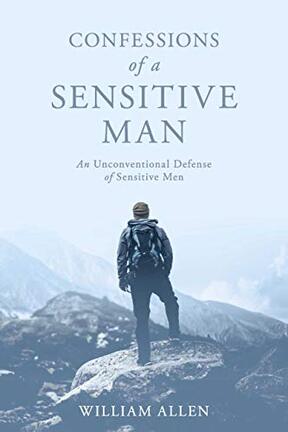 A Blog about Sensory Processing Sensitivity from the Worldview of a High Sensing Male For the next eight to ten weeks, I am going to be providing excerpts from my upcoming book, Confessions of a Sensitive Man, An Unconditional Defense of Sensitive Men. The E-book is and soft cover of the book is available now on Amazon, Barnes and Noble, iBooks, and Bookbaby.com. Please enjoy this free preview of the book. From Chapter 8 – Struggles of Being an HSM Being too Sensitive in a Macho World “Son, are you a man or a mouse?” My dad delivered these few words to me every time I got a bit too weepy as a little boy. Growing up in the ’50s and ’60s, it was not wise for little boys to show too many traits of emotional sensitivity. Might look like a sissy, if you know what I mean. So, my father would chide me with this little question, and I would abruptly stop my sensitive ways and buck up and act like the little man I was supposed to be. As the years went by, I began to shield myself from this type of criticism by trying to live the manly life I was taught to live. But it always felt a bit disingenuous and inauthentic. The older I got, the more I began to realize that I was no less a man because I could feel deep emotion, get in touch with my inner core, and freely express the emotion within. When I began to read about the highly sensitive personality type, I felt vindicated and liberated. Dr. Elaine Aron gets a lifetime achievement award from me. And I’m sure a lot of HSMs feel the same way. When I first started researching this topic, I was looking for male sensitivity and found that the first page or two of the search was focused on penile sensitivity. Interesting, but not what I had in mind. But I suppose there is some metaphorical tie-in too obtuse for me to elaborate on. Is there a sensitivity spectrum within HSMs? Are some HSMs more sensitive than others, more prone to emotional display or sensory overload, than say, other HSMs? I, for one, believe there is some truth to this. I mean, after all, we are all individuals, and science accounts for individual differences. We may have the same predisposition for an active amygdala, but perhaps the signals get muffled more so in some than others. Maybe there is some broad gradation starting with a threshold HSM, who is lowest on the scale of HSM sensitivity, a moderate HSM that straddles the wide middle, and a high HSM, one bordering on hypersensitivity. This could explain some of the diversity in HSM capacity and expression of that sensitivity. I know all HSMs are not what the general population would peg high sensitivity to be. Of course, no one is better or worse than the other, just a way to stratify further the traits of HSPs. This might explain why some HSMs weep at sad movies, while others just get the obligatory lump in the throat and wet eyes. In any case, regardless of where you fall on the spectrum, if you are an HSM, you are a man with fully functioning tear ducts. Be proud of that. This still remains about sensing capability, our high capacity to sense our world. It’s the inputs that affect us so. Sensitivity is the reaction to that sensing, and perhaps this sets us apart from our non-HSP fellows. So whether it is sights, sounds, smell, taste, or touch, or even the unconscious sense of intuition, we are always sensing deeply. And it will always affect us deeply. And, yes, we react sensitively and passionately. Yet we HSMs are still men; we are simply broadening the masculine definition. Fitting into a world that values machismo, the hyper-male, and toughness is always going to be a struggle for HSMs. The ridiculous focus on aggressive and dominant behavior, which is often seen as the epitome of masculinity in our culture, naturally divorces the American male from the emotions that are native to all humans. In other words, you are no longer a male unless you reflect a set of traits that are better suited for 10,000 B.C. than the twenty-first century. You can see this in our militaristic, warrior archetype that is reflected throughout our society in board rooms, bedrooms, and now bathrooms. We are still fighting imaginary wars every day at work, at home, and play. Even some women have adapted to this model to succeed in this dysfunctional paradigm. Our world is very troubled. The political discourse these last few years, the racial divides, the wars, the poverty, and all the detritus that swirls around this world, makes me think there has never been a better time for HSPs and HSMs to find our place in this world. It’s a time that is ripe for a shift away from the machismo politics of the Reagan Republican brand and back to a more compassionate, empathetic form of government. If this shift fails to take hold, I fear we are heading for a dark place as a culture and as a people. The HSP is often the canary in the mineshaft. Pay attention, world. We are uncomfortable in this manufactured male macho world that generally insecure and paranoid males have created. We HSMs need to assert ourselves in a distinct HSM way and penetrate the corporate ranks, the world of politics, religion, art, and journalism and serve as new role models for men everywhere. It is our sensing nature that will help change this world, and as men, we can help reshape the balance of things. We need to do something challenging for us—stand out. |
AuthorBill Allen currently lives in Bend, Oregon. He is a certified hypnotist and brain training coach at BrainPilots.com. He believes that male sensitivity is not so rare, but it can be confounding for most males living in a culture of masculine insensitivity which teaches boys and men to disconnect from their feelings and emotions. His intent is to use this blog to chronicle his personal journey and share with others. Archives
July 2024
Categories
All
|
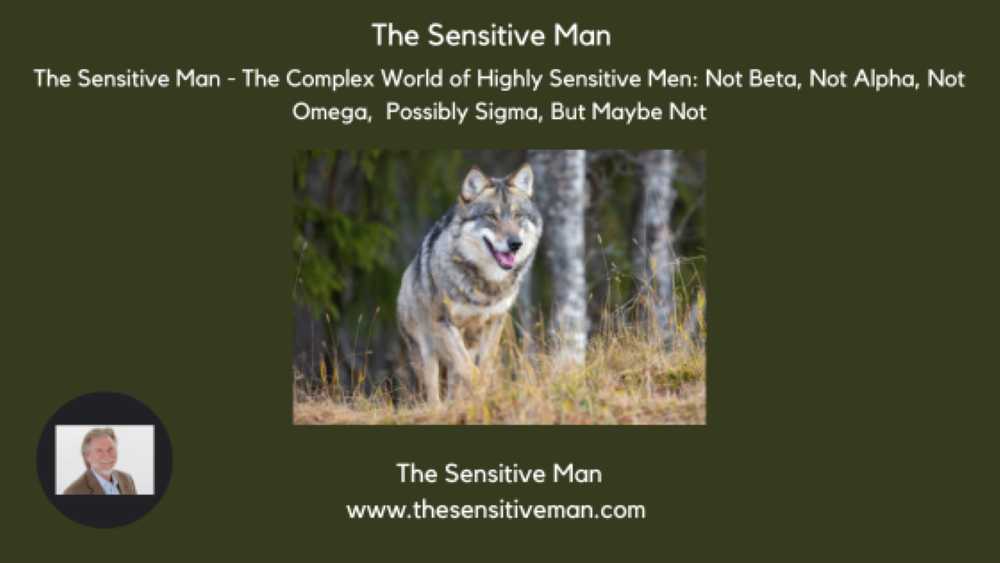
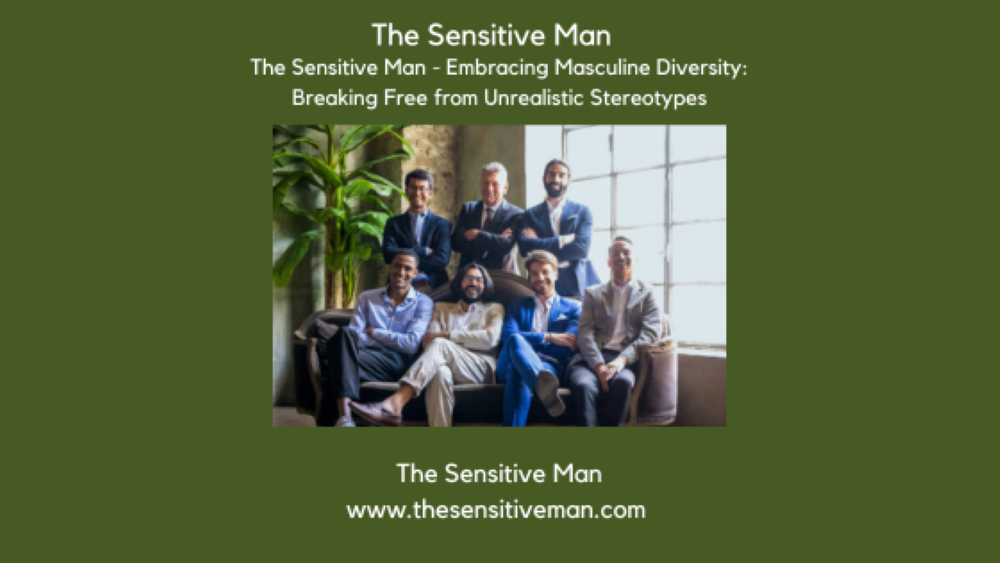
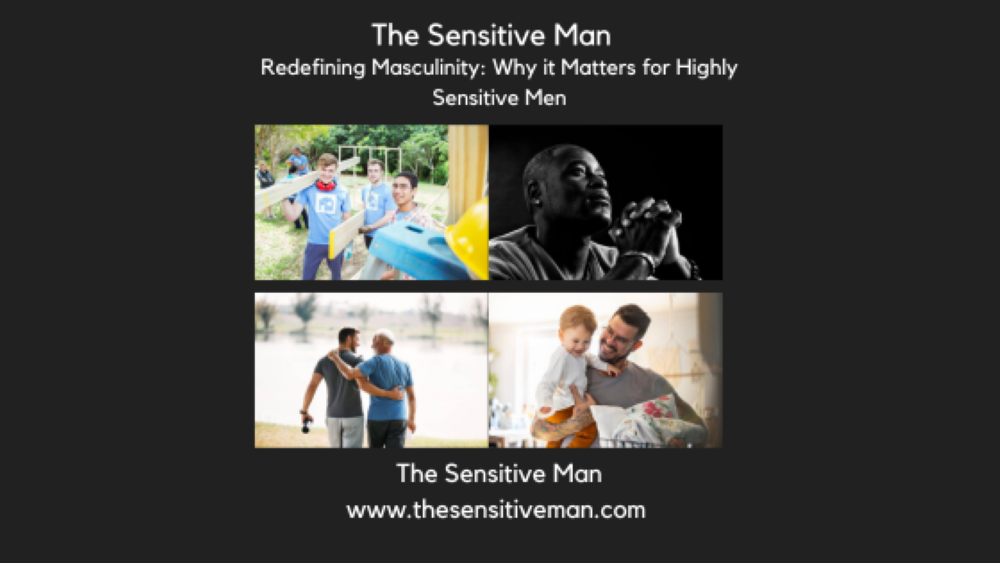
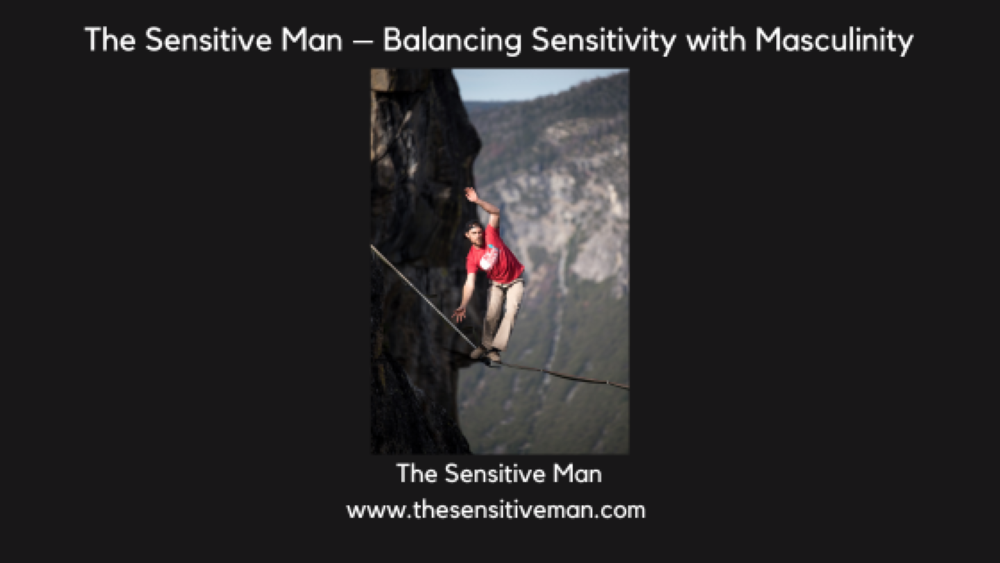
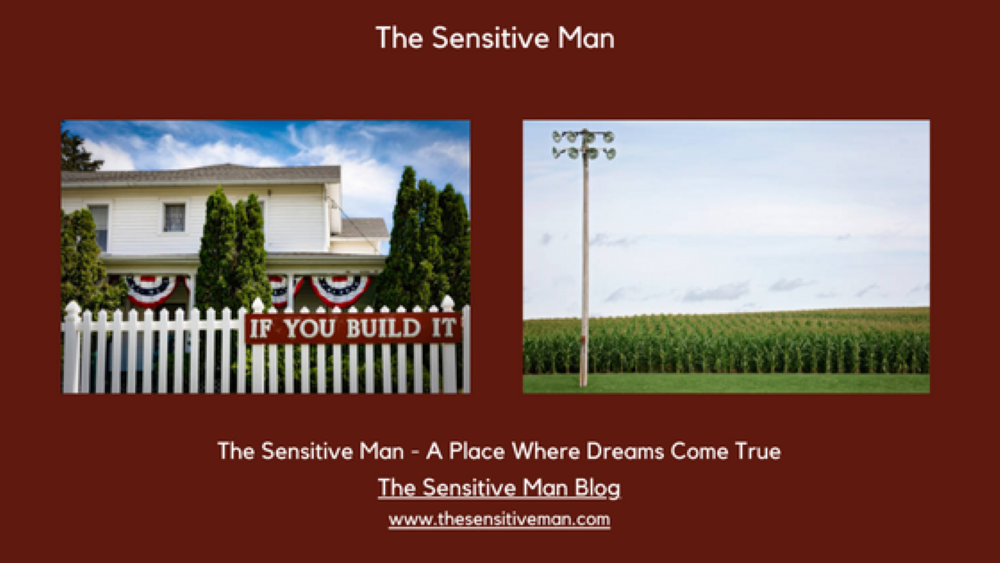
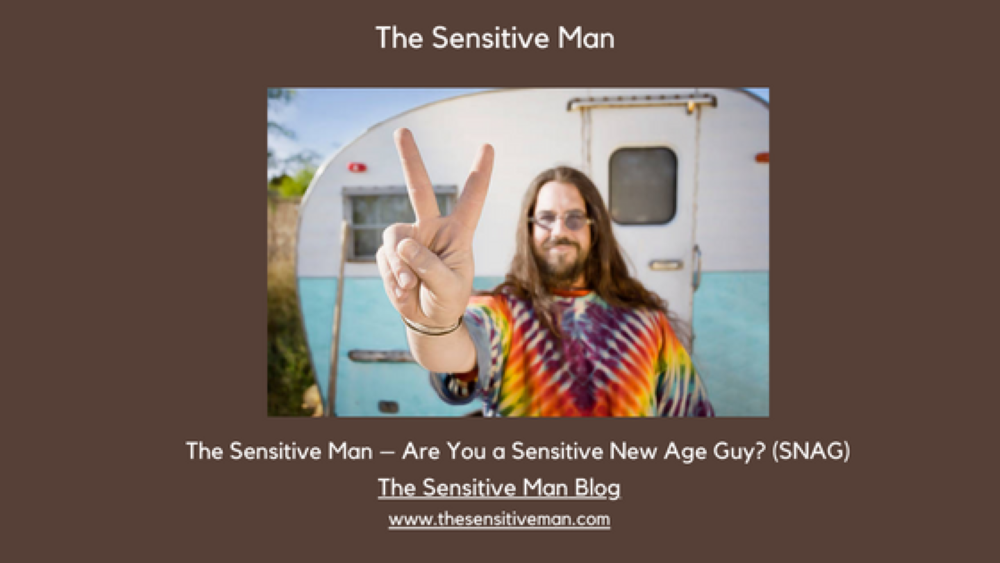
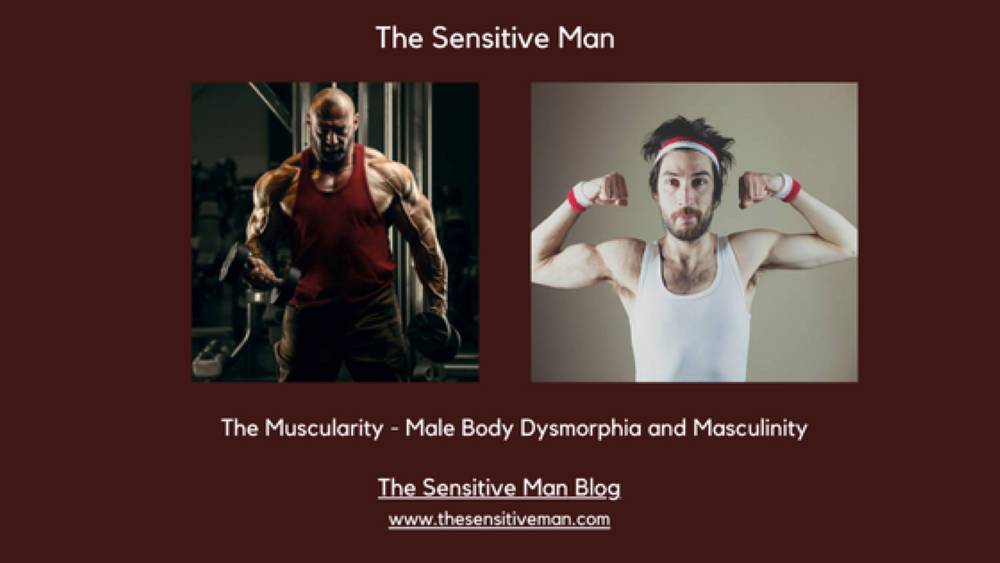
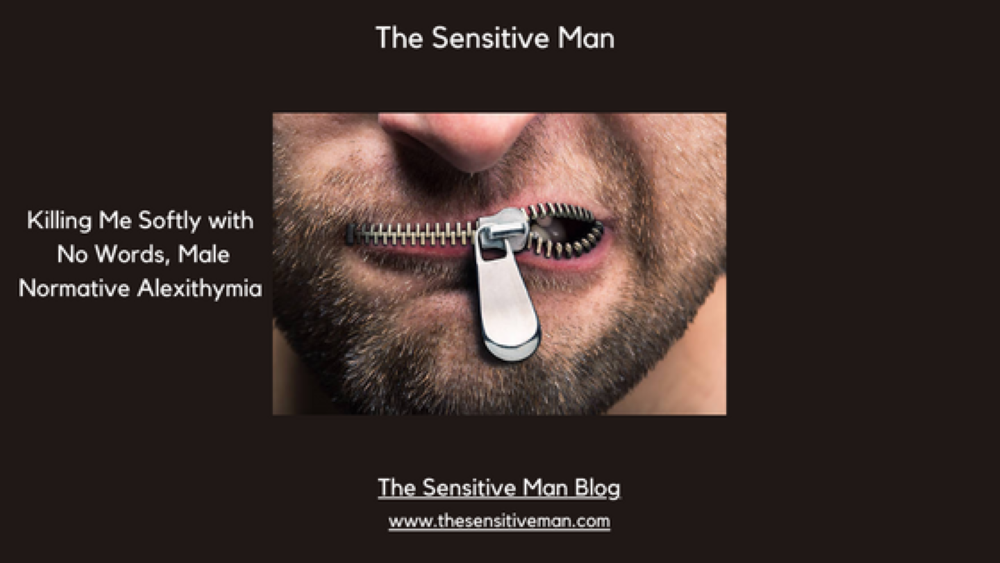
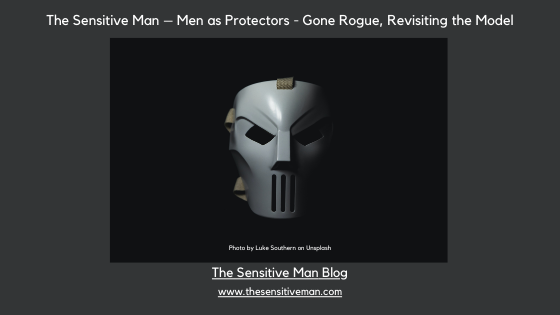
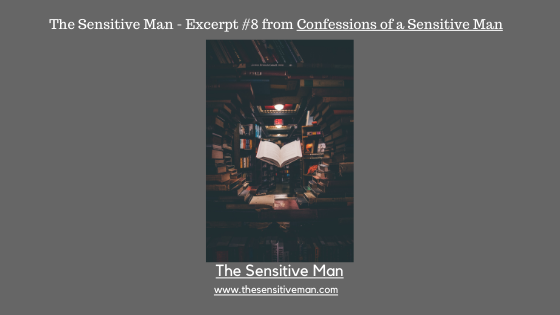

 RSS Feed
RSS Feed
